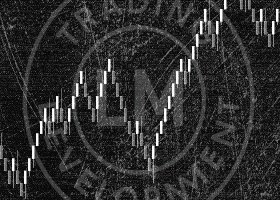UniCredit provide four reasons why they believe the USD will struggle in 2016. But others remind us why they are forecasting a notably stronger dollar over coming months.
- Central banks now quite comfortable to see their own currencies batter the dollar
- Societe Generale say the dollar index may have peaked
- DNB Markets still forecast euro / dollar at parity in 12 months
Will a poor year to date for the dollar only get worse over coming months?
The US Federal Reserve tripped the dollar at their March policy decision meeting having revised down their expectations for interest rate rises over coming months.
The US central bank are now suggesting only two rate hikes are likely this year, down from four seen in December 2015.
This is a big deal as a good chunk of fundamental support for the USD has been removed - the very reason the US dollar was such a strong performer in 2015 was because traders assumed it would benefit from higher interest rates in 2016.
These expectations are being questioned and the doubt has only encouraged the dollar’s critics.
Italian lender UniCredit have argued, for some time now, that the dollar’s ‘purple patch’ is over.
The bank has confirmed to clients the view that 2016 will not go the dollar’s way, particularly against the yen and euro.
“It is not long since the overwhelming market consensus was envisaging a turbo-charged USD for 2016 across the board, with some predicting EUR-USD falling to parity and below. But fundamentals matter. Misalignments from equilibrium can be persistent, but in the end they do correct,” says Dr. Vasileios Gkionakis, Global Head of FX Strategy with UniCredit Bank in London.
Copy signals, Trade and Earn $ on Forex4you - https://www.share4you.com/en/?affid=0fd9105
Why the Dollar’s Days of Strength are Over
We have distilled the arguments forwarded by Gkionakis and his team as to why the dollar is likely to suffer going forward.
1) It is overbought, and therefore trading above levels justified by economics. “What began as a re-alignment with fundamentals, higher US real yields in 2H14, quickly escalated into a frenzy of dollar longs in 1H15, sending the USD sharply higher – much higher than could have been justified by the macro underpinning,” says Gkionakis.
2) Central bank divergence is a dying theme - i.e the Fed looking to raise rates while the rest of the field were looking to slash rates and concoct other methods of stimulus.
This divergence created a USD-favourable scenario whereby markets bought dollars in anticipation if higher US yields while ditching riskier jurisdictions.
On this front, “things are now beginning to change,” argues Gkionakis.
3) Point 3 feeds off point 2: “The Fed is erring towards a more dovish stance than the (already dovish) market expectations. This is a key point, as the dollar could not sustain its gains even with a normal hiking cycle, let alone now with anticipations of an even more gradual one,” says Gkionakis.
4) UniCredit believe other major central banks seem to be stepping back from material further easing and, in certain cases, from the zero-sum game of currency manipulation.
Other analysts agree, Credit Suisse are now suggesting the ECB is abandoning targeting a lower exchange rate altogether.
The governor of the Bank of Canada, Stephen Poloz, meanwhile startled markets by acknowledging that further Canadian exchange rate depreciation would pose risks to the inflation outlook.
In the meantime, the USD-CAD has depreciated by an eye-watering 11%, narrowing a still-wide overvaluation.
UniCredit cite other examples of willingness by central bankers to let currencies batter the dollar:
- the BoJ has done virtually nothing to stand in the way of the material yen appreciation, more than 5% in trade-weighted terms and 8.5% against the USD,
- the RBA has turned perceptibly less dovish and,
- last but not least, last week’s ECB’s communication which represented adeparture from its long-held FX obsession.
Dollar Index has Peaked: Societe Generale
It is worth noting that UniCredit are by no means a lone voice in saying 2016 will not end well for the Greenback.
HSBC have been at odds with market consensus for some time too, back in November we carried a report on their argument that a peak in USD outperformance was nigh.
Societe Generale have meanwhile told their clients to also expect the dollar to underperform.
“Beyond the near-term, the dollar's advance has stalled this year. With the Fed turning cautious, it is difficult to see new cycle highs in the dollar against either euro or yen this year,” say Alvin Tan at Soc Gen.
The dollar index - the basket of the dollar’s biggest pairs - is consequently expected to test key support at 9300/9400 in coming weeks.
At present the index is at 9528.
DNB Markets: The Dollar Will Return
As one can expect, the analyst community is never in agreement.
In fact the views can be quite polarised, which understandably makes treading the foreign exchange markets a tricky prospect for those with an interest in the dollar’s direction.
“Diverging monetary policy will continue to favour the USD. We see a next Fed hike in June and another 2 hikes before year end. More aggressive hikes in 2017,” say DNB Markets in a foreign exchange brief to clients.
DNB are therefore sticking to the once ubiquitous view that the US economy is strong, will stay strong, and will therefore command a higher currency.
The ECB is on the other hand expected to cut the deposit rate by another 10 bps and increase asset purchases in March.
This keeps alive the central bank policy divergence theme which UniCredit reckon is dead; interest rates in the US and Eurozone will continue to widen ensuring renewed buying interest in the dollar.
The 3 months interest difference (EUR-USD) has been unchanged last week. US 2017 FRAs fell 12-13 bps, while similar EMU FRAs have fallen 1-2 bps.
“Our forecast for 1, 3 and 12 months are 1.10, 1.07 and 1.00, respectively,” say DNB on the euro to dollar exchange rate’s outlook.
Morgan Stanley are in the same camp as DNB Markets having also reiterated calls for parity of late.
Interestingly, Morgan Stanley’s argument is that a new threat will take prominence in the FX debate moving forward - that of the perilous state of the Eurozone banks' balance sheets.
Morgan Stanley's analysis assumes a backdrop of constrained global liquidity conditions, caused by repatriation of yen by Japan and a rising dollar, which are likely to make, “creditors more selective about where to place their funds.”
In such an environment Euro-area banks will come up for closer inspection and may be found wanting:
“We think that FX investors will start to become more concerned about the large balance sheets in the European banking sector.”



